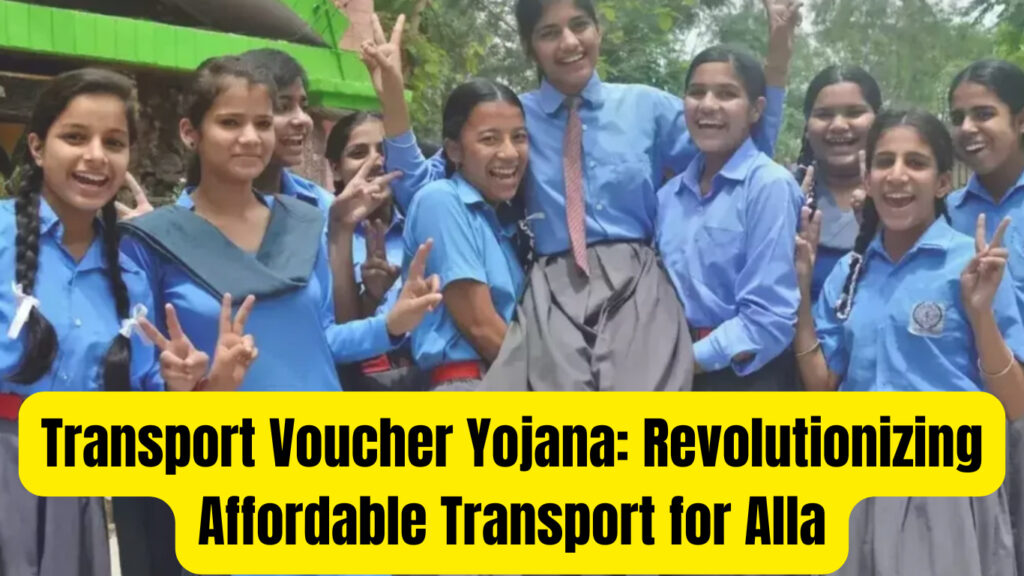
Transport Voucher Yojana: Revolutionizing Affordable Transport for All
Transport Voucher Yojana is one of the most crucial parts of modern life. It forms a backbone to access education, employment, health, and all other social activities. However, it becomes a major source of expenditure for daily commutes for most sections of the society, especially for economically weaker sections. To address this issue, the government has launched the Transport Voucher Yojana as an inclusive scheme to make transport available at affordable and reliable rates to the disadvantaged sections of the population. It mainly targets the students, women, elderly persons, and workers belonging to the unorganized sector. Transport Voucher Yojana would probably break the barriers of mobility and motivate people for involvement in economic and social activities.
Table of Contents
What is Transport Voucher Yojana?
The Transport Voucher Yojana is a government initiative, which financially allows the people to undertake journeys by providing travel vouchers on public transport like buses, trains, subways, and all other government transport systems. These vouchers can be availed of for journeys of short distances as well as of longer distances with a special thrust towards helping low-income people, students, senior citizens, as well as workers belonging to the unorganized sector. This is supposed to make transportation more affordable so that economic inequality does not prevent access to such essential services as education, healthcare, and employment.
The scheme is premised on the principle of inclusivity, ensuring no individual from any of the income groups is left behind and remains entirely excluded to fully participate within society because of mobility restriction. The same time, the scheme shall support the government’s macro objectives of decongesting traffic and curbing carbon emission into the atmospheric and promoting sustainable urban development within such environments.
Objectives of the Transport Voucher Yojana
Transport Voucher Yojana is being designed to achieve several key objectives addressing both immediate transportation needs and some broader environmental and economic goals:
1. Increased Inclusiveness
In essence, the scheme focuses on ensuring that no financial constraint reduces accessibility to services like education, health, and employment. Travel support by the state should enhance mobility in marginalized and relatively economically constrained segments of society toward better integration in society.
2. Develop Public Transport
Making public transport cheaper enhances the incentive among people to choose buses and trains or any other kinds of public transport over private transport. It not only reduces traffic congestion in the roads but also helps decrease air pollution, making the cities and environment cleaner as well as healthier.
3. Strengthen the Economy
It enables transport and has significantly reduced the financial burden of commuting, thus enabling participation in the economy for people in general, especially the economically weaker sections. This will enhance mobility through increased productivity and stronger involvement in the economy of a larger segment of the population.
4. Facilitate Green Urban Development
The scheme promotes eco-friendly as well as sustainable transportation, which corresponds to the bigger vision of the government about building green cities. This concept further emphasizes public transport over individual ones, thus reducing the likelihood of traffic congestion and carbon emission.
Abua Awas Yojana: A Paradigm Shift in Rural Housing
How Uttar Pradesh’s Free Water Scheme Will Revolutionize Farming in 2024-25
Key Characteristics of Transport Voucher Yojana
1. Eligibility criteria
The scheme mainly focuses on groups that seriously need cheaper transport. The beneficiaries of this plan include:
– Students: Especially from poverty-stricken areas or rural settings who find it hard to commute for school/college.
– Seniors: 60 years old and above seeking low cost transportation to be moved around socially, for health purposes, or other personal errands.
– Working Women: Particularly ladies working in sectors or indus tries that demand daily rounds.
– Workers in the Unorganized Sector: Including Domestic Workers, Laborers, and the like, who need to have daily modes of transport to get to work.
2. Voucher System
The scheme issues travel coupons, which can be exchanged for any journey on public buses, trains, subway, and government transport systems. The coupons are also accessible in digital and printed forms and can be easily usable. Special allowance is made in case of journeys that would take more than two hours for educational and health purposes.
3. Digital Integration
One key feature is that Transport Voucher Yojana uses digital technologies to ensure ease of access and convenience. On behalf of the beneficiaries, a mobile application specific to this program helps in accessing and managing these vouchers in the manner of digital vouchers supported by QR code. This saves much time besides also cutting down on paperwork.
4. Environmental Benefits
The plan is conceptualized with sustainability. In reality, governments promote reduction in the number of private vehicles on the road; that is why encouraging public transport leads to lesser traffic congestion and less carbon emissions .This will help in the development of places in urban areas.
How to become a part of Transport Voucher Scheme?
1. Online Registration
Applicants have to visit the official government website of the scheme and fill an online application form. Form will ask for personal details ID proof, income certificate, and category like Student, Senior Citizen, Working Woman.
2. Verification
Once the application is made, the concerned authorities validate the authenticity of the applicant through the necessary documents. This will ensure that only the true applicants are benefited from the scheme.
3. Voucher Issuance
After verification, vouchers are issued to the recipients. They can be sent by post; one can collect them through the mobile application or collect them from specific centers of distribution.
4. Redeeming the Voucher
Once these vouchers are issued, the beneficiary can make use of such vouchers for booking tickets or redeem them at any transportation counters towards travel purposes. This is done for short-distance as well as long-distance traveling depending on the terms and conditions of the voucher.
Advantages of Transport Voucher Yojana
There are innumerable advantages of Transport Voucher Yojana that can be very advantageous for an individual as well as the society at large:
1. Financial Relief
This reduction in transportation costs relieved the financially weaker sections, and it helped in the allocation of resources towards other issues they face more often.
2. Accessibility is High
In providing affordable travel, it would increase more opportunities for people to engage in educations, work, and social activities since many people experience various mobility barriers from participating in society.
3. Sustainability: Encourages
Promotion of Public Transport This will not only benefit users individually but shall also ultimately benefit the government in its greater environmental objectives. The emission will be lower with reduced dependence on personal vehicles, and the environment will be clean and green.
4. Empowerment of Women
Another important advantage is connected with the mobility of women since the scheme helps the women by making journeys inexpensive, so that more women are going to go to the job market and hence, it brings gender equality and helps them economically as well.
5. Infrastructural development of Public Transport
Increased demand for public transport services would increase investments in infrastructures such as good buses, trains, and stations that would improve the overall journey experience for one and all.
Challenges and Government Responses
Its promising scope notwithstanding, Transport Voucher Yojana faces some challenges that need to be overcome to make this scheme a success:
1. Awareness and Outreach
The first challenge is getting the targeted beneficiaries aware of the scheme. As the remedy, the government has already planned several outreach programs through radio and television along with digital platforms to teach people how to access the benefits.
2. Efficient Implementation
A scheme is efficient only when it is implemented efficiently. This would mean removing the delays that occur between the distributions of vouchers and adequately preparing the public transport infrastructure for the increased number of users. The local governments and digital interfaces should, therefore, streamline all these to ensure that there are no delays or inconvenience in accessing the scheme.
3. Infrastructure Capacity
Expanding and modernizing public transport systems to accommodate the growing number of beneficiaries would be necessary. This would again require strategizing for investment in infrastructure, with enough expansion to increase passenger capacity and smoothen travel.
Conclusion
Transport Voucher Yojana is a change-maker that better makes transportation more affordable, accessible, and green. It is really very much aligned with the vision of an economically vibrant, inclusive, and sustainable society envisioned by the government. Such a scheme has the potential to improve quality of life significantly for millions of people, empowered in marginalized groups, encouraged to use public transport, or with mobility barriers reduced. It is expected to be a landmark of India’s way towards equitable and sustainable urban development going forward as it keeps rolling out and evolving.
For more information and to apply, visit the official Transport Voucher Yojana website or your local government service centers.




Very interesting information!Perfect just what I was looking for!